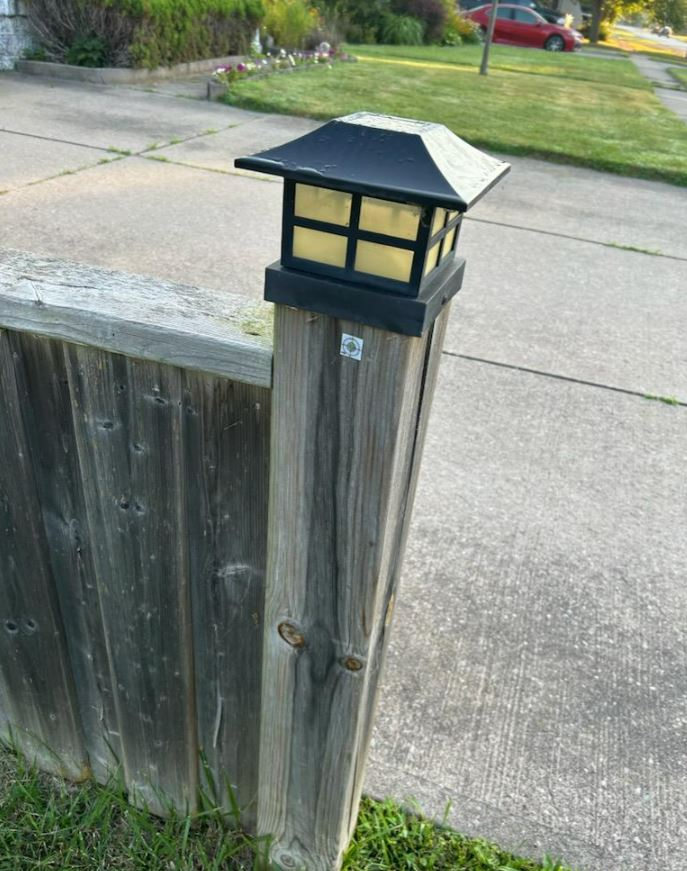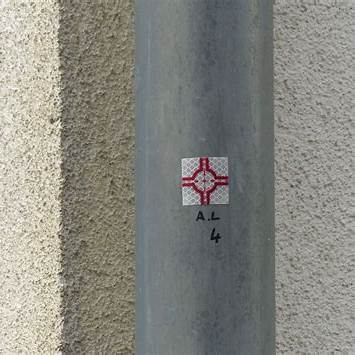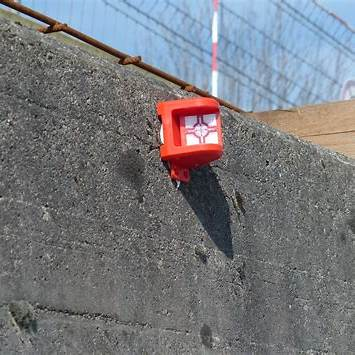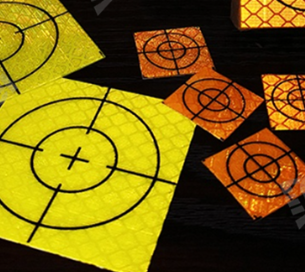You’re walking through your yard, coffee in hand, when something odd catches your eye: a small, square sticker—maybe reflective, maybe with a crosshair—nailed or stuck onto your fence. Your first thought? Probably something like, “Is someone tracking me?” or “Is this some kind of prank?”
But before your imagination runs wild, take a breath. That little marker isn’t random at all. What you’re looking at is most likely a survey target, and it plays a surprisingly big role in shaping your neighborhood.

What Is a Survey Target—and Why Is It on Your Fence?
Survey targets are small markers used by professional land surveyors to collect precise measurements. These targets can look like stickers, metal reflectors, or even plastic tags with crosshairs printed on them. They’re used in conjunction with high-tech tools—like total stations, GPS units, or drones equipped with LiDAR—to accurately map out areas of land.
These markers act as fixed reference points. When placed correctly, they help surveyors measure angles, distances, and elevations with pinpoint accuracy. And yes, their placement is intentional. Your fence? It was chosen because it’s a stable, visible structure—perfect for anchoring a reference point that won’t budge in the wind.
Video: This video shows surveyors using reflective targets as control points, clearly demonstrating how these markers help capture precise measurements with total stations.
Why These Reflective Stickers Are Suddenly Showing Up
If you’ve noticed one of these markers on your property or nearby, there’s probably a survey happening—or about to happen—in your area. The reason could be:
- Road repairs or widening projects
- Utility line upgrades (internet, gas, water, or electric)
- Property boundary assessments
- New construction or rezoning
- City infrastructure development
In other words, this tiny sticker could be the first sign of major improvements coming to your neighborhood.
No, It’s Not a Tracking Device or a Hidden Camera
Let’s bust a common myth right now: these stickers are not surveillance tools. They don’t record video, audio, or location data in the way that would impact your privacy.
They’re not connected to law enforcement or tech companies. In fact, they’re completely passive—just reflectors used to bounce signals back to measurement devices.
If anything, they’re the opposite of invasive. They’re part of the quiet groundwork that allows engineers, architects, and planners to do their jobs efficiently and safely.
Should You Remove the Sticker? Here’s What to Know First

We get it—seeing something unfamiliar attached to your property can be annoying. But don’t reach for the screwdriver just yet.
Removing a survey target before a project is complete can cause costly delays. Since each marker is part of a carefully mapped grid, removing even one can throw off measurements and waste hours of work.
If the sticker has been there for a long time and no visible work has happened, it’s okay to get curious. Reach out to:
- Your local public works department
- The municipal surveyor’s office
- The utility company handling nearby upgrades
They can tell you whether the target is still needed or if it’s safe to remove. In many cases, crews return to collect or discard them once the project wraps up.
Surveying: The Ancient Practice Behind Modern Precision

It may feel like a recent phenomenon, but surveying has ancient roots. The Egyptians used ropes and sticks to map fields. The Romans built their roads and aqueducts with help from early measuring tools.
Today’s surveyors are armed with laser-guided instruments, GPS mapping software, and aerial drones, but the core purpose hasn’t changed: to map the world with precision.
From laying the foundation of a new building to upgrading fiber-optic lines beneath your street, surveyors use targets like the one on your fence to ensure that everything lines up—literally.
What Makes These Markers So Important in Today’s World?
Video: In this clip, the process of using reflective targets to determine property boundaries is broken down step by step—perfect for understanding how those tiny reflectors become crucial mapping tools
Let’s zoom out for a second.
Imagine trying to build a road, lay new pipes, or reroute electrical lines without accurate land data. Things would get chaotic fast. Survey targets allow professionals to:
- Establish accurate boundaries
- Coordinate multi-phase projects
- Avoid costly errors in elevation or distance
- Keep construction crews safe and informed
In short, those tiny squares help ensure everything is where it’s supposed to be before a single shovel hits the ground.
The Next Time You See One, Know This
That odd sticker or reflector you spotted is actually part of a larger puzzle. It’s a small but critical link in the chain of planning, measuring, and building that keeps our modern world running smoothly.

Rather than dismissing it or worrying about it, take a moment to appreciate the silent precision it represents. Someone took the time to plan that placement, measure that point, and prepare for something designed to improve your community.
Conclusion: Don’t Overlook the Small Stuff—It’s Building Something Bigger
It’s easy to overlook a sticker on a fence. But when you know what it means, you start to see it differently. It’s not clutter. It’s not random. It’s a symbol of progress, preparation, and the kind of behind-the-scenes work that keeps our world organized.
So the next time you spot one, you don’t need to panic—or peel it off. Just smile, nod, and know that change is probably on the way… one tiny square at a time.


